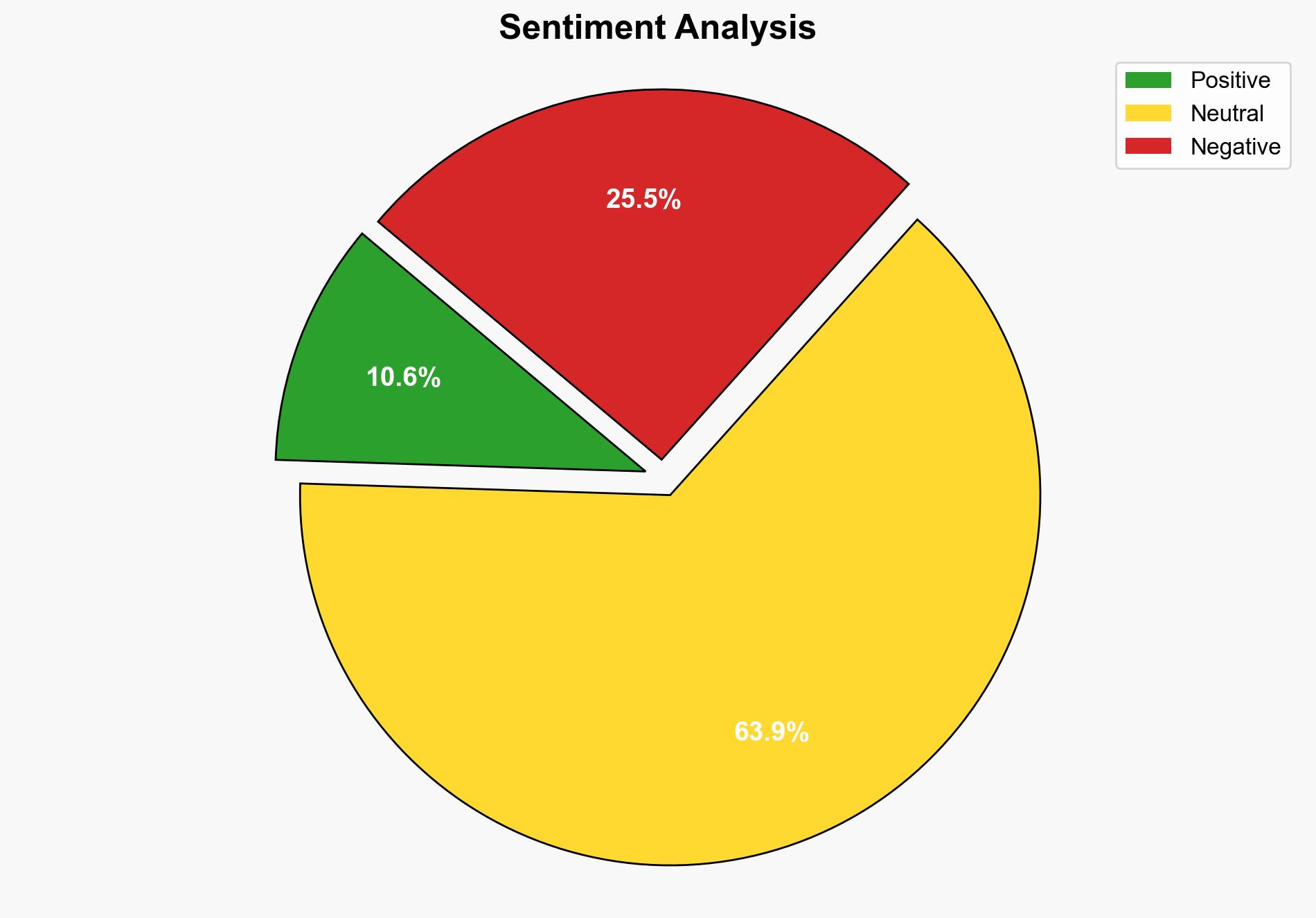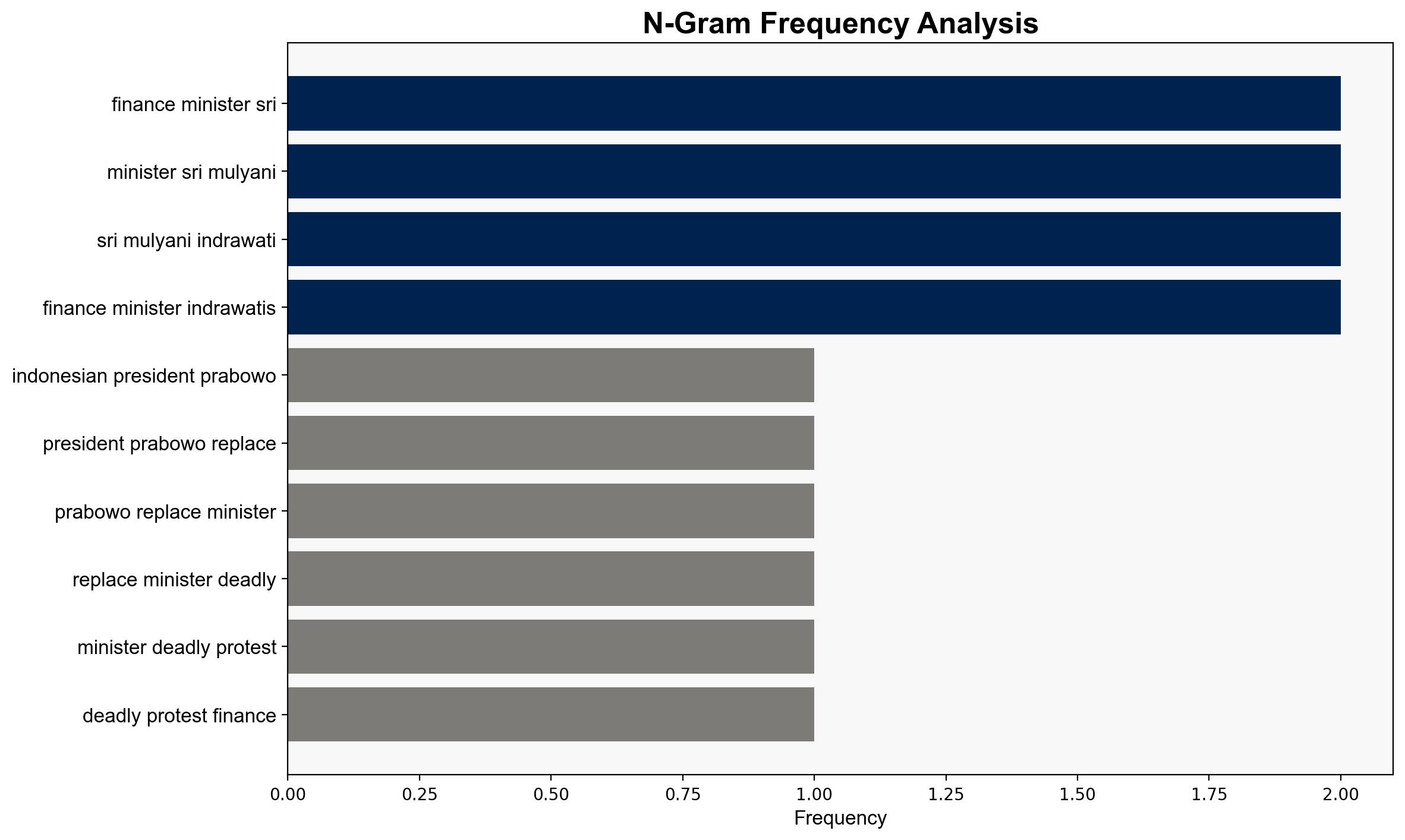Indonesian President Prabowo replaces five ministers after deadly protests – Al Jazeera English
Published on: 2025-09-09
Intelligence Report: Indonesian President Prabowo replaces five ministers after deadly protests – Al Jazeera English
1. BLUF (Bottom Line Up Front)
The recent cabinet reshuffle by Indonesian President Prabowo Subianto, following deadly protests, is likely a strategic move to quell public dissatisfaction and stabilize his administration. The most supported hypothesis is that the reshuffle aims to address economic grievances and restore public confidence. Confidence level: Moderate. Recommended action: Monitor the effectiveness of new economic policies and public sentiment to anticipate further unrest.
2. Competing Hypotheses
1. **Hypothesis A**: The cabinet reshuffle is primarily a response to public dissatisfaction with economic conditions, aiming to stabilize the administration by addressing economic grievances.
2. **Hypothesis B**: The reshuffle is a strategic maneuver to consolidate power and preemptively address potential threats to Prabowo’s authority, especially in light of upcoming elections.
Using ACH 2.0, Hypothesis A is better supported due to the focus on replacing the finance minister with an economist, indicating an emphasis on economic reform. Hypothesis B is less supported as there is limited evidence of direct threats to Prabowo’s authority beyond public protests.
3. Key Assumptions and Red Flags
– **Assumptions**: It is assumed that the public protests are primarily driven by economic dissatisfaction. Another assumption is that the cabinet reshuffle will effectively address these grievances.
– **Red Flags**: The rapid replacement of ministers could indicate instability within the administration. The potential for military influence, given Prabowo’s background, is a concern.
– **Blind Spots**: Lack of detailed information on the internal decision-making process behind the reshuffle.
4. Implications and Strategic Risks
The reshuffle could lead to short-term stabilization if economic measures are effective. However, failure to address underlying issues may result in renewed protests. The risk of increased military involvement in governance poses a potential threat to democratic processes. Economic instability could have regional implications, affecting trade and investment.
5. Recommendations and Outlook
- Monitor the implementation and impact of new economic policies closely.
- Engage with regional partners to assess potential economic and political impacts.
- Scenario-based projections:
- Best Case: Economic reforms succeed, leading to public satisfaction and political stability.
- Worst Case: Continued unrest and increased military influence destabilize the region.
- Most Likely: Mixed results from reforms, with periodic protests and political challenges.
6. Key Individuals and Entities
– Prabowo Subianto
– Sri Mulyani Indrawati
– Purbaya Yudhi Sadewa
– Budi Gunawan
7. Thematic Tags
national security threats, economic reform, political stability, regional focus




